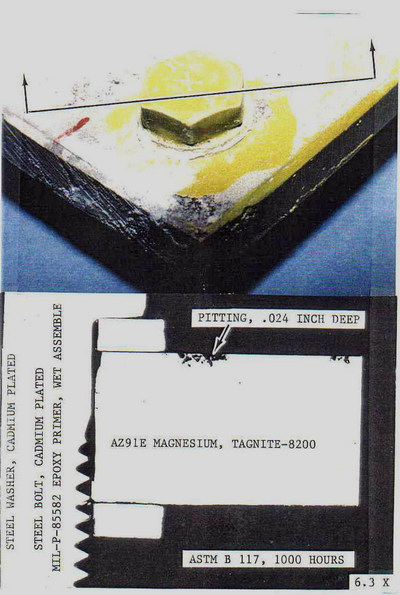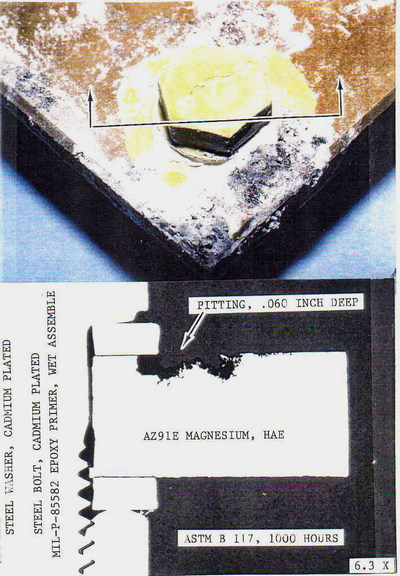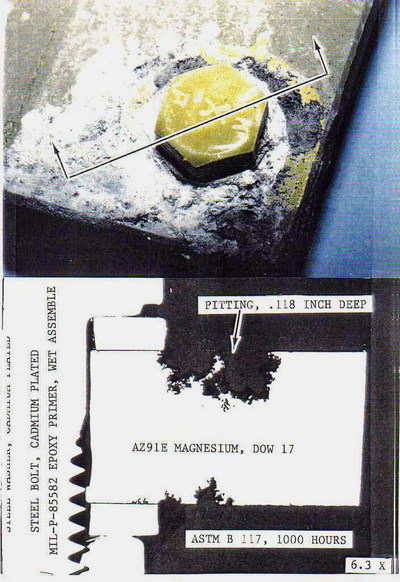Galvanic corrosion is an electrochemical process which can take place when a magnesium component is in direct contact with a dissimilar metal and moisture is present to serve as a bridge between the dissimilar metals. In galvanic corrosion terminology, the magnesium part is referred to as the anode, the dissimilar metal is the cathode and moisture connecting the two is the electrolyte. A typical example would be a magnesium transmission case and cover (anode) bolted together with steel nuts and bolts (cathode). Galvanic corrosion is always a concern when dealing with magnesium because magnesium is sacrificial to all other engineering metals.
When trying to prevent galvanic corrosion, designers employ a number of tactics. One is to choose fasteners which provide the least galvanic activity such as aluminum instead of steel. Another prevention tactic is to help prevent moisture from being present by providing adequate drainage where the dissimilar metals connect. A commonly used method in the aerospace industry is to apply a very thin layer of paint to the bolts prior to inserting them into or through the magnesium part and then additional paint over the top of the bolts. This is often referred to as wet assembly. The paint helps prevent intimate contact between the magnesium and steel thus reducing conductivity between the two metals. The paint on top of the bolt head prevents moisture from connecting the base of the bolt head with the magnesium. When steel must be used, cadmium plating helps reduce potential galvanic activity.
The Tagnite coating plays a major role in preventing galvanic corrosion for two reasons. First, Tagnite’s high dielectric strength inhibits the flow of current between dissimilar metals. Threaded holes can be coated with Tagnite which provides a non-conductive layer between the magnesium and steel threads. The mating surfaces benefit by having a non-conductive layer between the magnesium and steel washer or bolt head. Second, Tagnite’s superior corrosion resistance significantly increases the amount of exposure to a given environment a part can withstand before the coating is breached and the magnesium is subject to attack.
The photos shown below are AZ91E sand cast magnesium test plates which have been coated with TAGNITE-8200 Type I, Dow 17 Type I and HAE Type I. Each plate was wet assembled using a cadmium plated steel washer and bolt and placed in salt spray (ASTM B117) for 1,000 hours. Notice how much greater the galvanic attack is on the Dow 17 and HAE coated plates than on the TAGNITE-8200 coated plate.

TAGNITE – 8200 
HAE 
DOW 17
